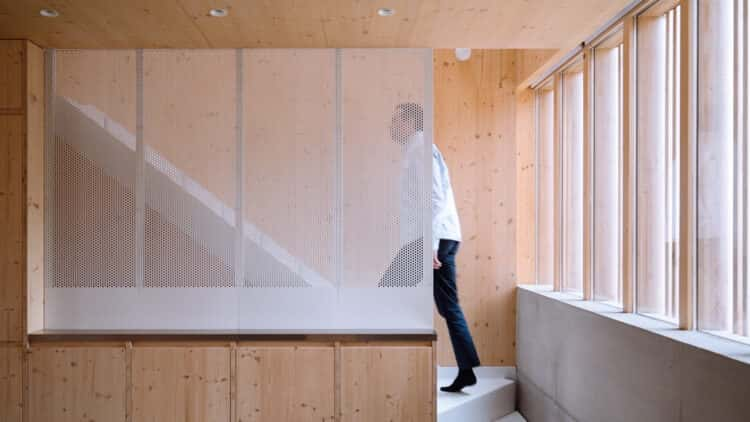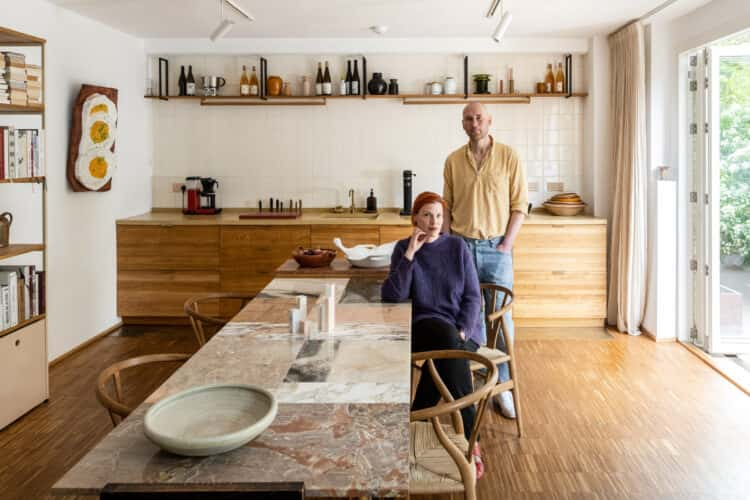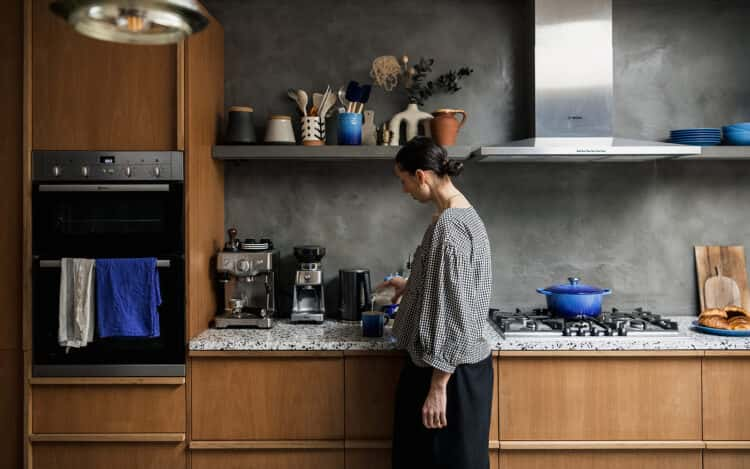Inside Vitra’s spectacular new showroom in Shoreditch
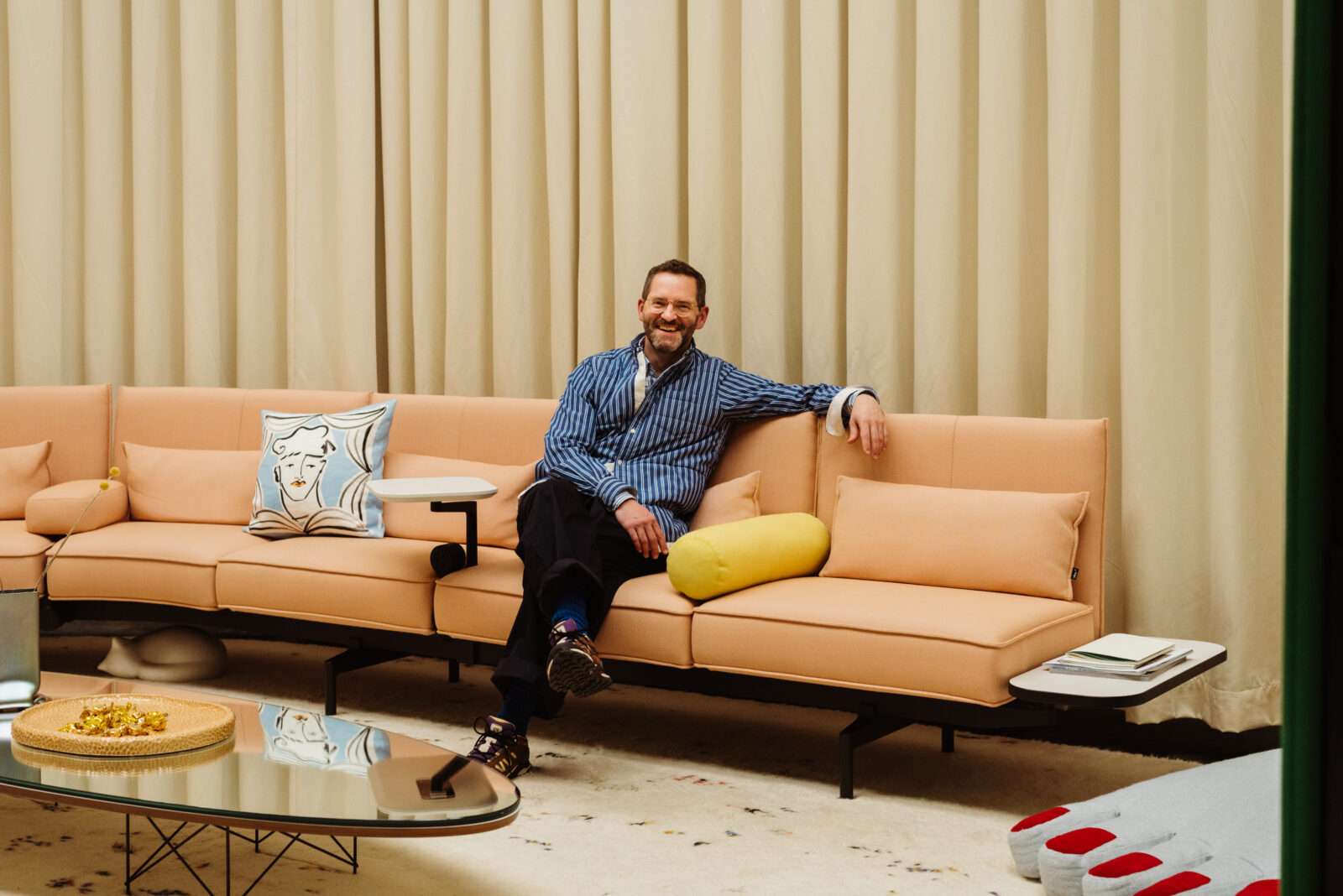
“We tried not to get rid of anything that we could reuse thoughtfully. Like the wind lobby or the mezzanine – other elements we’ve never questioned, such as the fantastic historic skylight from 1905,” says Till Weber, Vitra’s creative director of interiors and scenography, as he wanders the brand’s new London showroom at the Tramshed in Shoreditch. “The mezzanine, for example, already existed but it was cladded and weirdly stained, so I said, ‘Let’s strip it.’ And now it blends in nicely. So it’s an approach of carefully looking at what is there.”
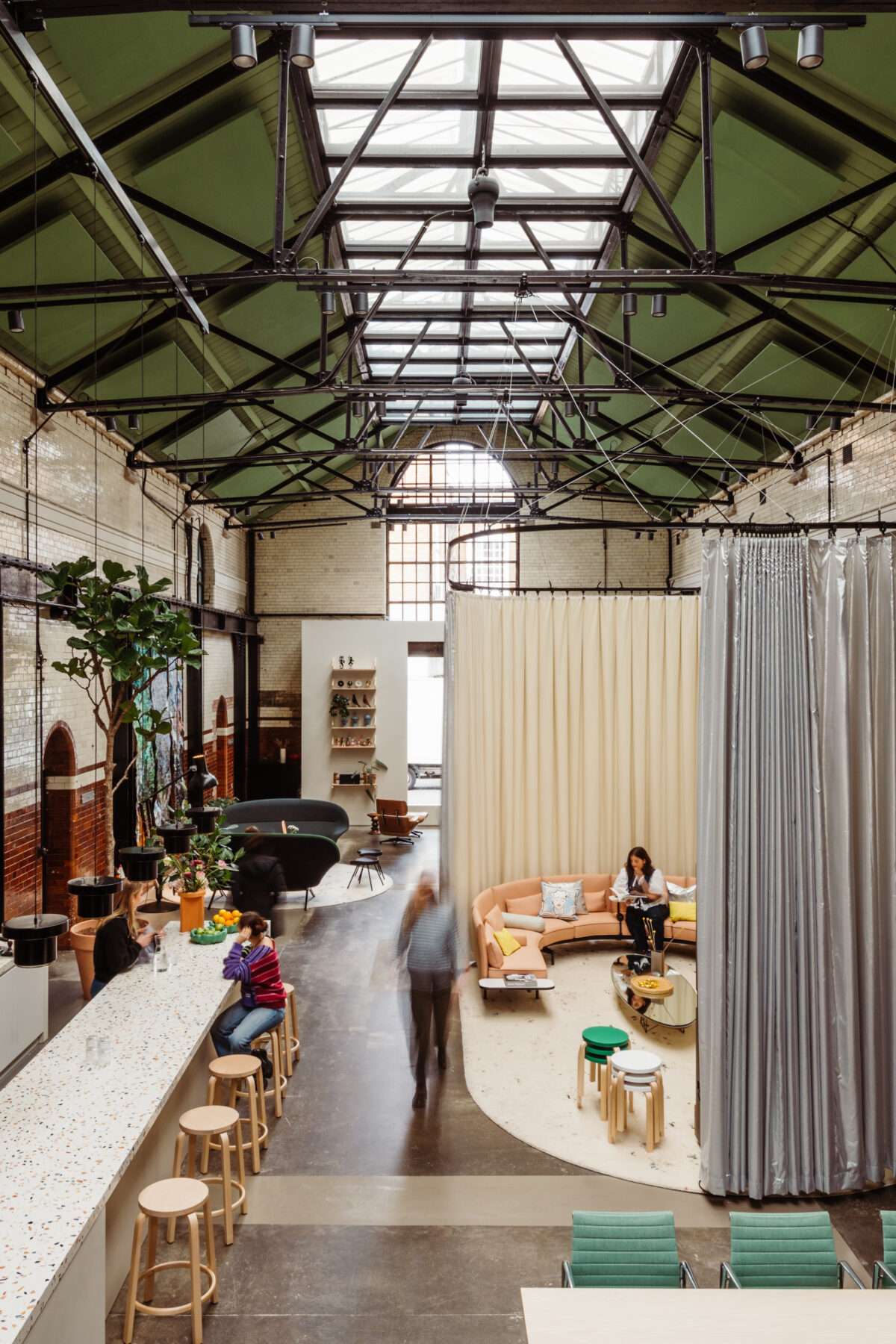
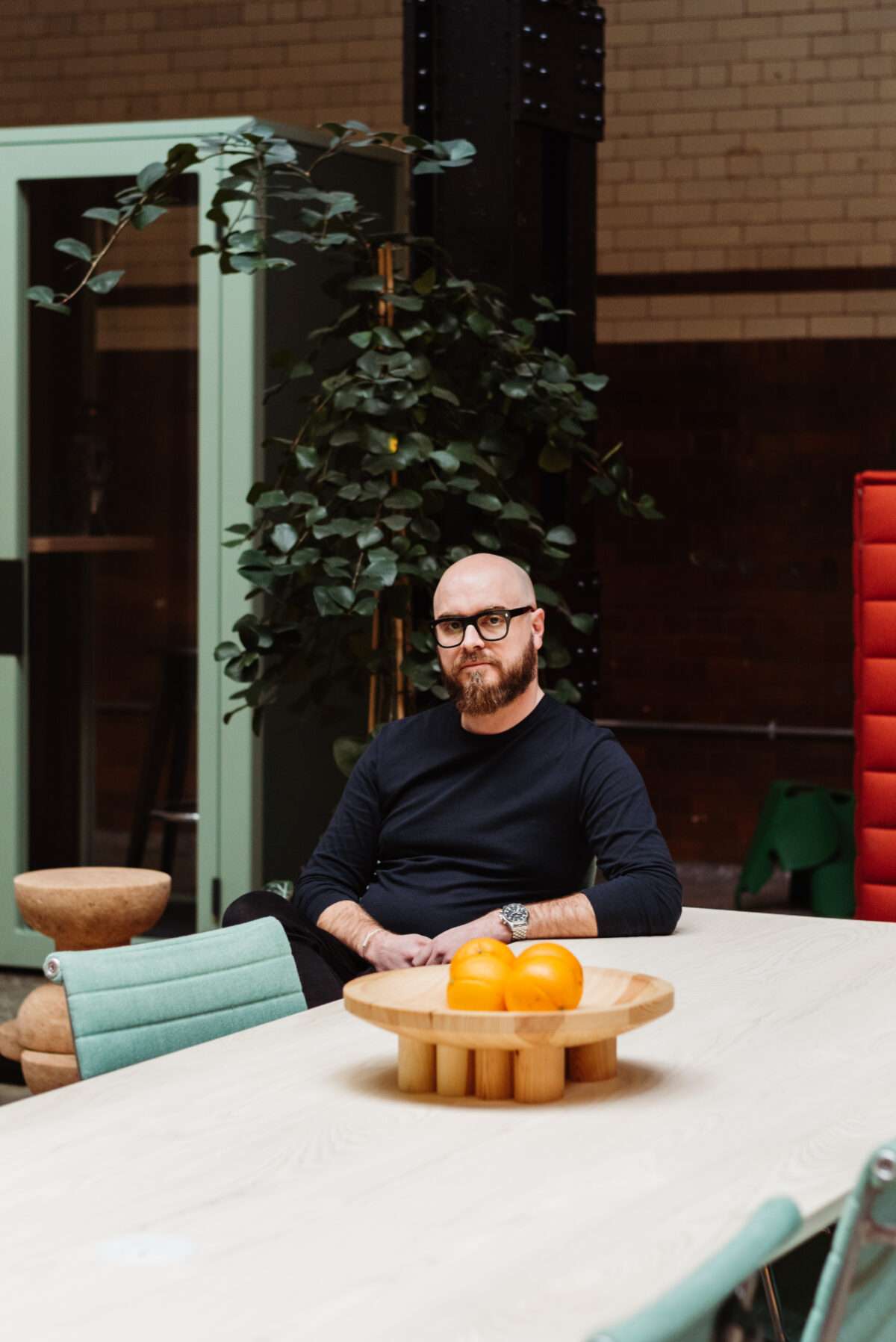
Like the VitraHaus in Weil am Rhein, the idea is to build a home and a community as much as a showroom. “The building led us. It’s a home for the local team. We had workshops with them and sought out their needs. It’s always a tricky balance between finding strong, existing architecture like this and showing a collection.” Comprising a gallery, event spaces, meeting rooms, offices and, of course, an expansive furniture collection, Vitra’s new outpost is boldly public-facing and invites visitors to experience the brand’s iconic furniture in an organic, in-situ manner.
Importantly, it speaks the local design vernacular. While paying homage to the architectural heritage and leaving certain parts, such as the façade, untouched, the team completely reimagined others. A terrazzo countertop bar, speckled red and green, both contrasts and complements the late-Victorian glazed-brick aesthetic. The choice of blanc de treillage – a warm off-white hue – for the interior creates a sense of harmony and continuity, as well as echoing finer design touches such as the rippled curtain that wraps around a circular meeting space. It’s a modular environment designed to fit evolving needs – client showings, launch parties, team meetings and everything between. “You have dedicated, flexible areas,” says Weber. “Even if you can hear the others, visibly you’re cut off. That makes a huge difference. It’s a lot like the way hotel lobbies are used.”
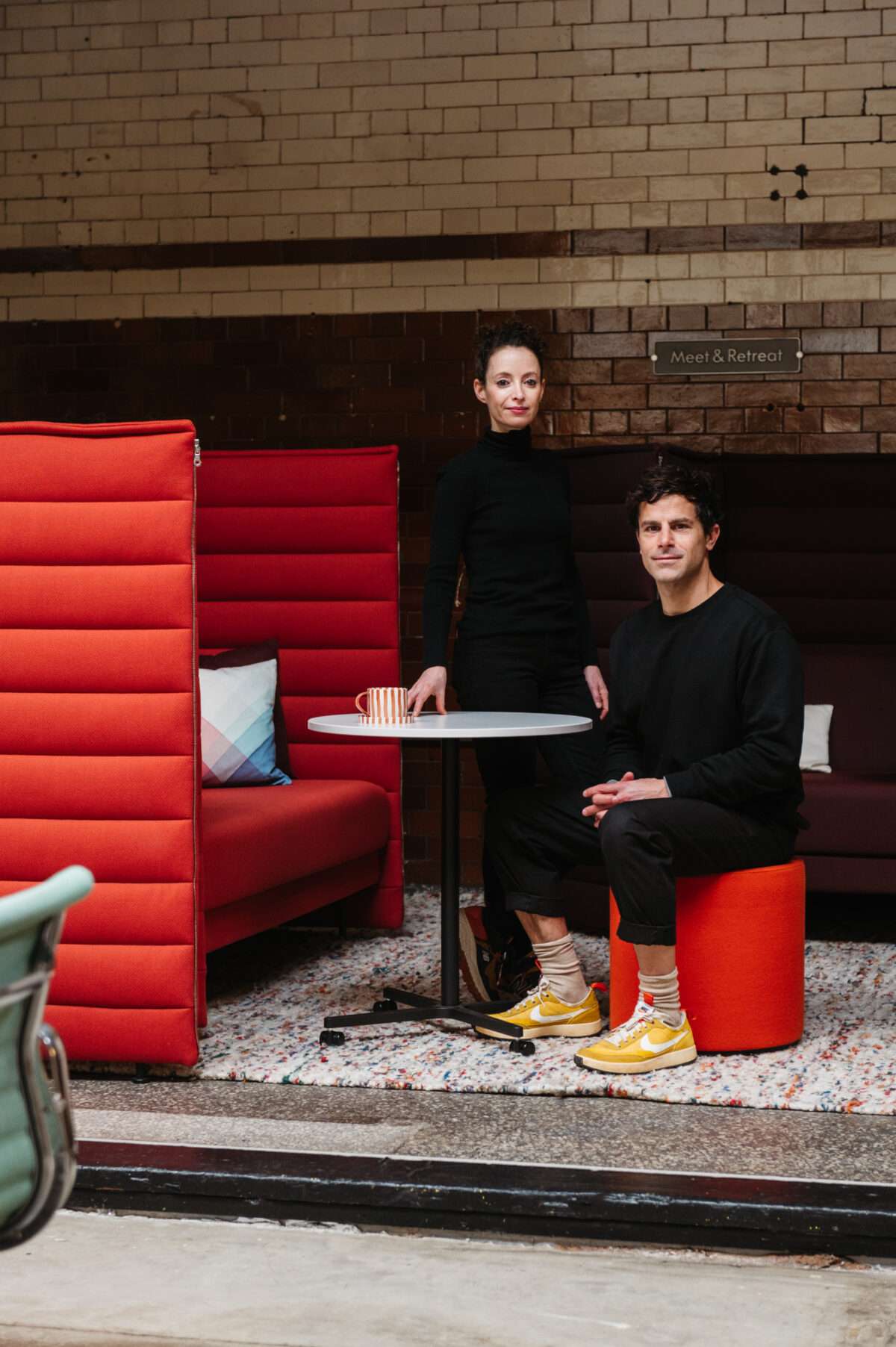
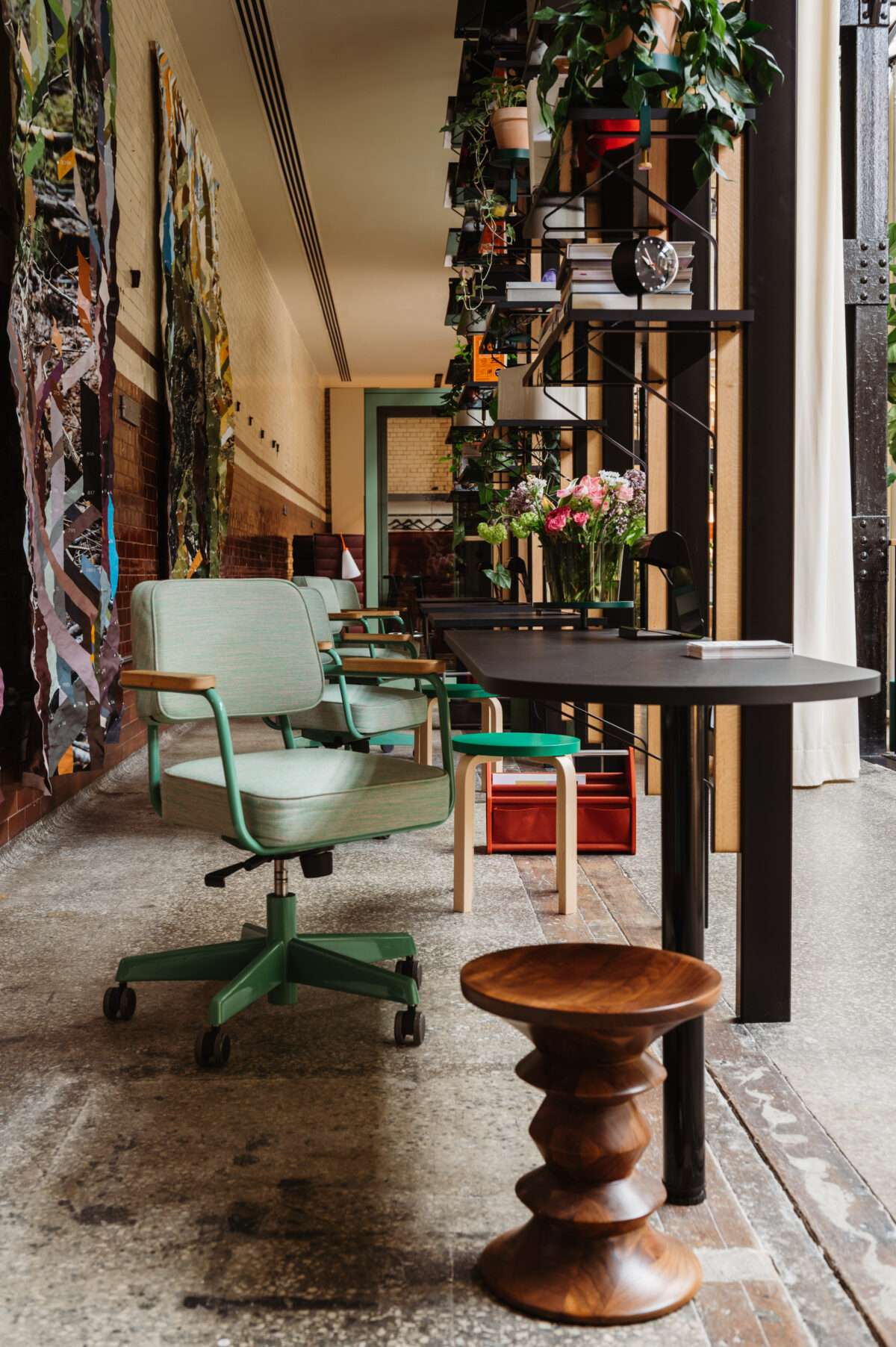
True to Vitra’s signature style, the London showroom is a collage of both the brand’s collection and guest designs. Rotund, washi-paper floor lamps by Isamu Noguchi and curvaceous Verner Panton chairs are paired with rugs from a collaboration between Kvadrat and Peter Saville. Present are the unmistakable icons, such as the Eames Lounge Chair, but also newer creations, for instance, pillows and ceramics by Raw Edges – a London-based studio started by the Israeli designers Shay Alkalay and Yael Mer. The couple originally produced these playful, immersion-dyed pieces for VitraHaus’s ‘The Loft’ space in 2018. “The main part of the brief Vitra gave was that they’d like it to feel as though you’ve jumped into someone’s house. They encouraged us to come up with an imaginary character – who’s an artist, say, or an architect – and to design around them,” says Alkalay. “But we had just redone our house in London,” adds Mer, “so we thought: ‘Why imagine someone else when we can imagine ourselves?’”
The Tramshed is a chance to connect with the brand as much as to see and get a feel for the furniture. “I think that, in the world we live in now, it’s important for people to look at and touch products more than ever. But you also need to make a showroom a destination for people,” says Jonathan Parr, Vitra’s managing director for the UK and Ireland. “The space needs to inspire while also functioning as a brand tool and practical showcase.” The Tramshed is far from just a static shop floor. With new and frequent events, exhibitions and showroom arrivals – not to mention the opening of the ‘The Loft’, billed for later in 2023 – Vitra’s London home is a place that, like the brand, is in continuous evolution while staying firmly in touch with its past.
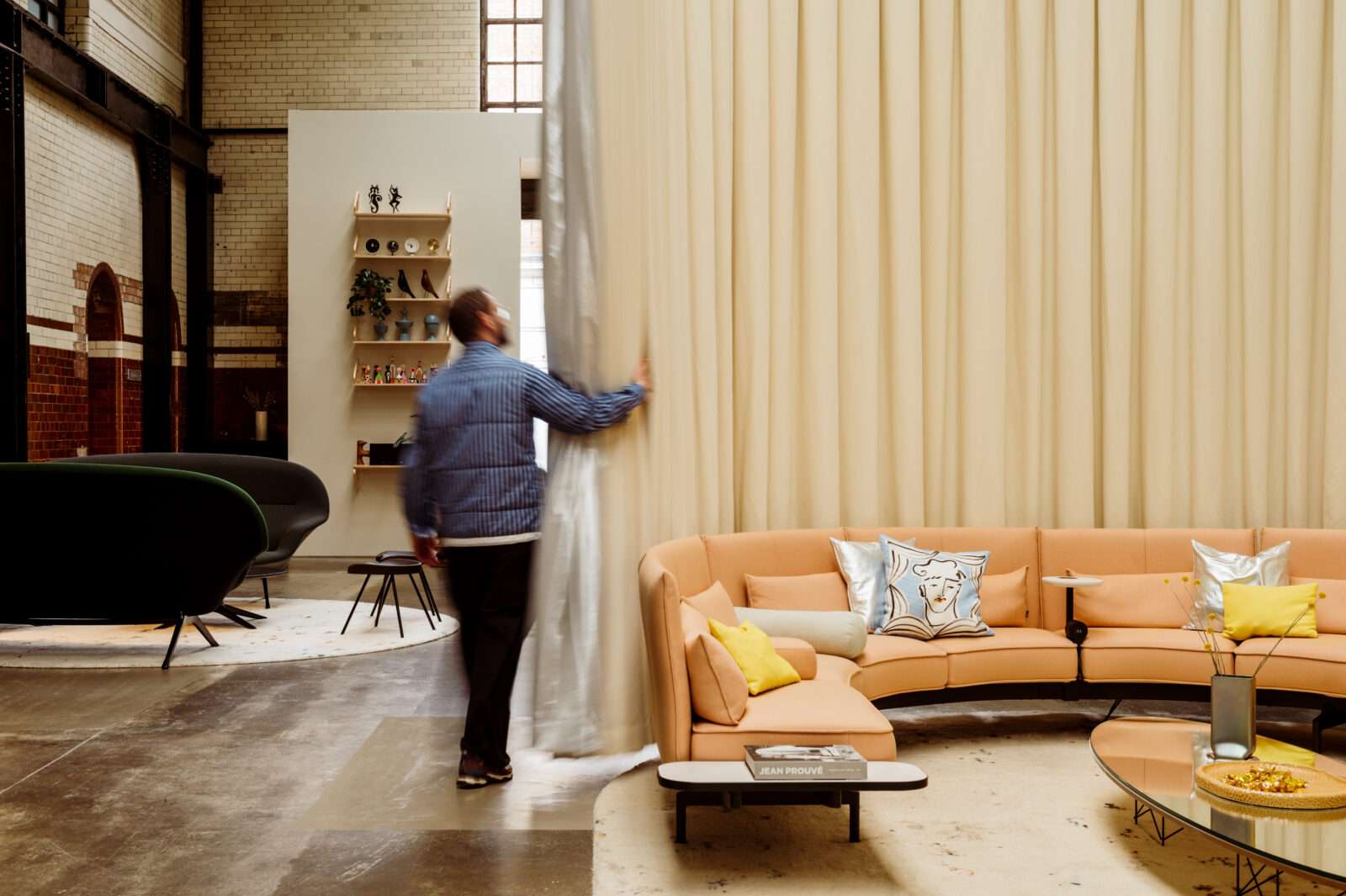
1. Alcove
Ronan and Erwan Bouroullec’s design has been dubbed a ‘room within a room’. Or think of it as a relaxed, quiet niche to disappear into without having to leave the bustle of the workplace entirely – a way to straddle two worlds. There are multiple configurations available – from a single-person, mobile version with a side desk, to a four-person ‘cabin’ with a table and plush, high walls that afford remarkable sound-reduction.
2. Soft Work
Designed by Edward Barber and Jay Osgerby for Vitra, this sofa-centric workstation puts emphasis on comfort and versatility. Rather than an isolated cubicle with a desk and a chair in the manner of yesteryear, Soft Work is designed for the 21st-century creative. Think of it as the ergonomic centrepiece of a workplace. People come and go, take meetings, hash out a problem together, do some writing – all with as much privacy or openness as one desires. Mobile tables and chairs can be pulled out to expand the workspace and add formality, while partitions offer seclusion without a total disappearing act. What’s more, Soft Work comes in an array of shapes and configurations to suit every environment.
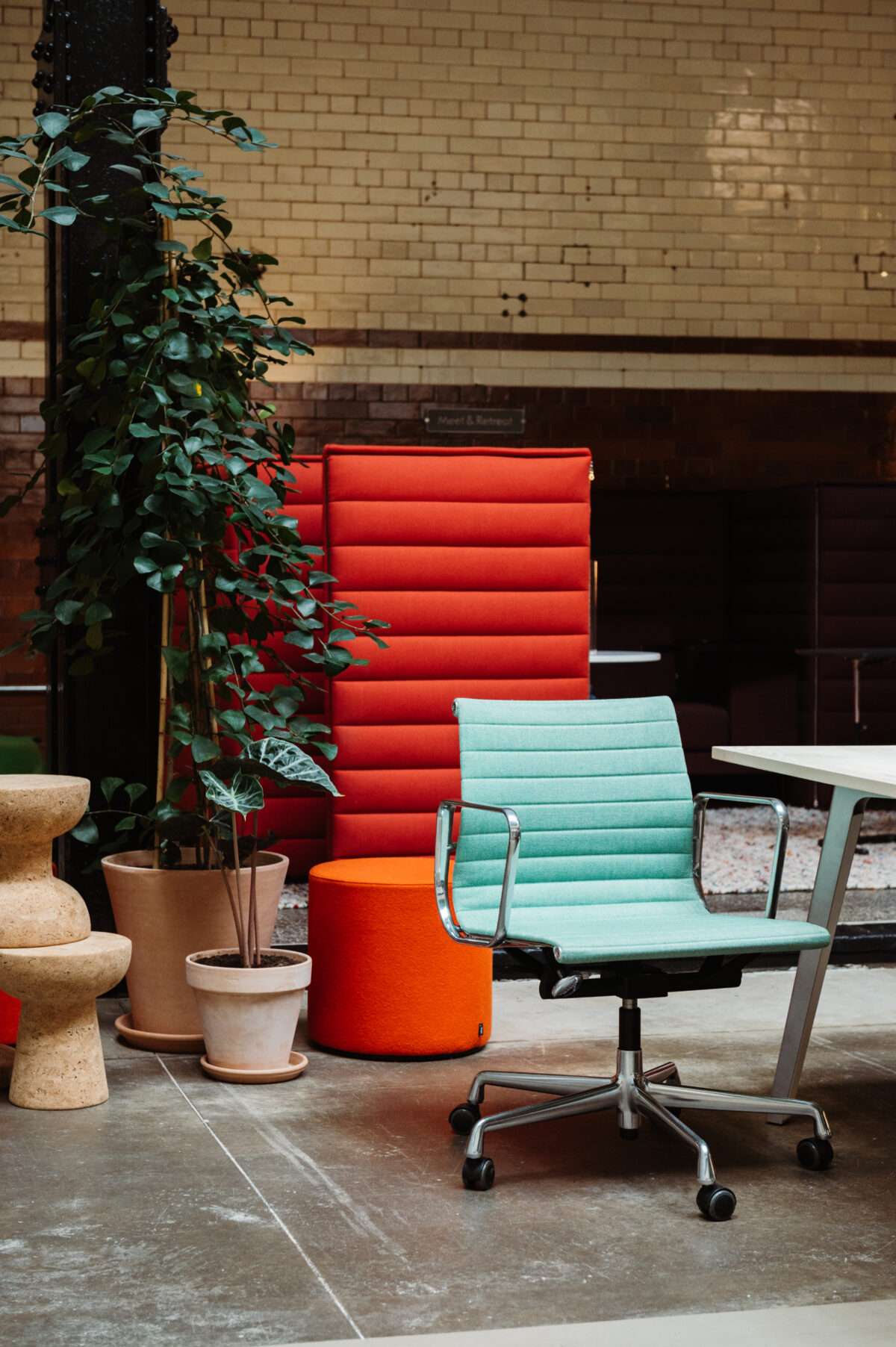
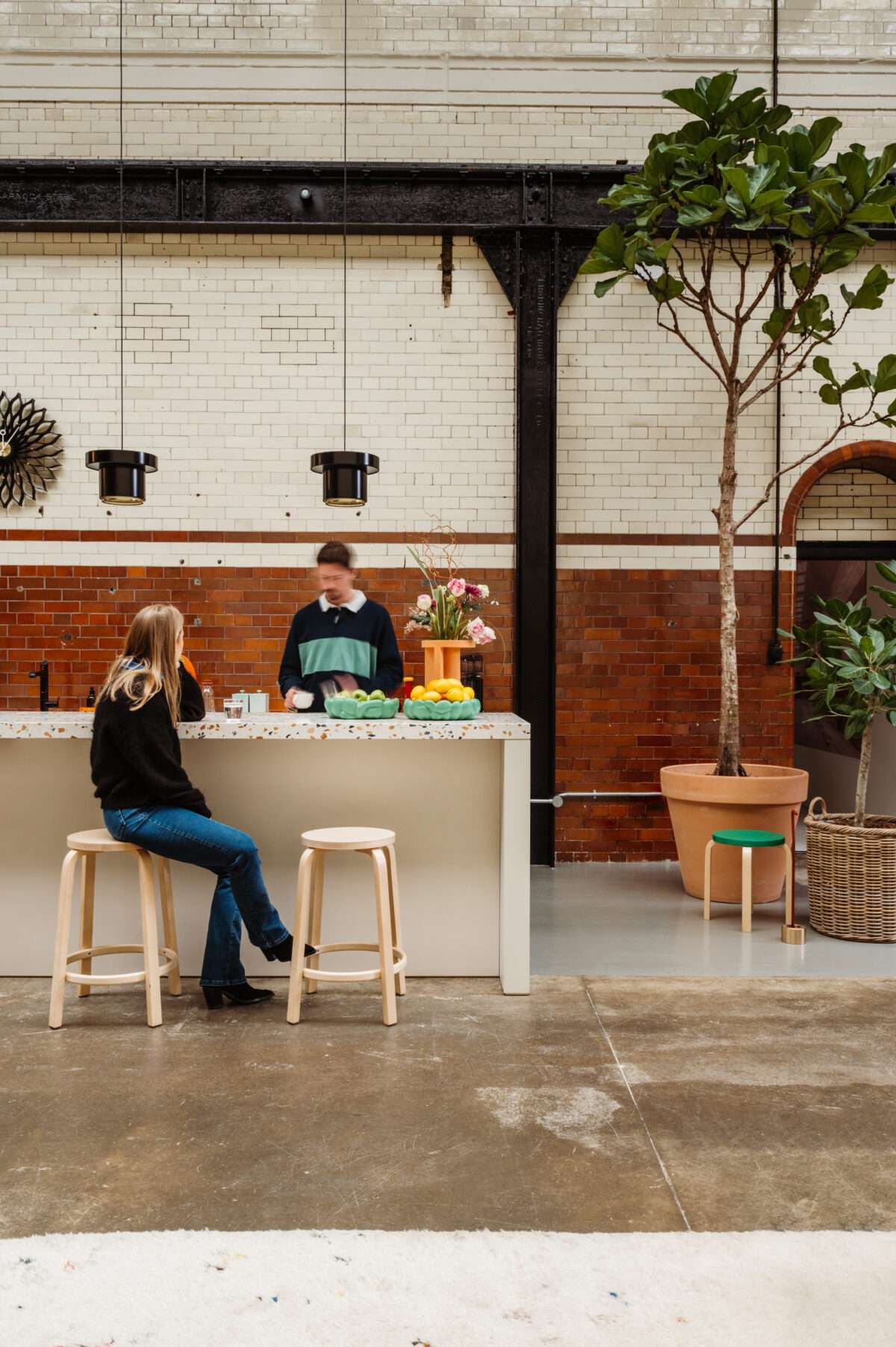
Part of what makes Alvar Aalto’s design an enduring classic is that there’s no wrong way or wrong place to put it. Be it in a restaurant, office, kitchen or living room, the Finnish maestro’s birch stool always looks the part. The simple appearance belies complex innovation. In the early 1930s, Aalto figured out how to bend wood using a cutting technique and by inserting wood veneer strips, thus creating the smooth, sturdy and fetching L-leg.
4. Fauteuil Direction Pivotant
Jean Prouvé’s 1951 design isn’t just the forefather of the ergonomic office chair – more than 70 years on, it’s also still one of the paradigms. With a swivel seat, tiltable back and generous, soft upholstery, it offers comfort and flexibility without all the sinewy plastic one usually associates with office chairs. There is an honest, bright beauty to this piece.
It’s an immediately recognisable design, to the extent that the look has become synonymous with the modern image of a workplace – although Ray and Charles Eames originally created the chair for the private residence of an American art collector. The allure is in the austerity. The slight yet versatile aluminium frame doesn’t draw attention, and the tapering seat echoes the human form, creating a chair that’s more like a shadow than an outright presence.

